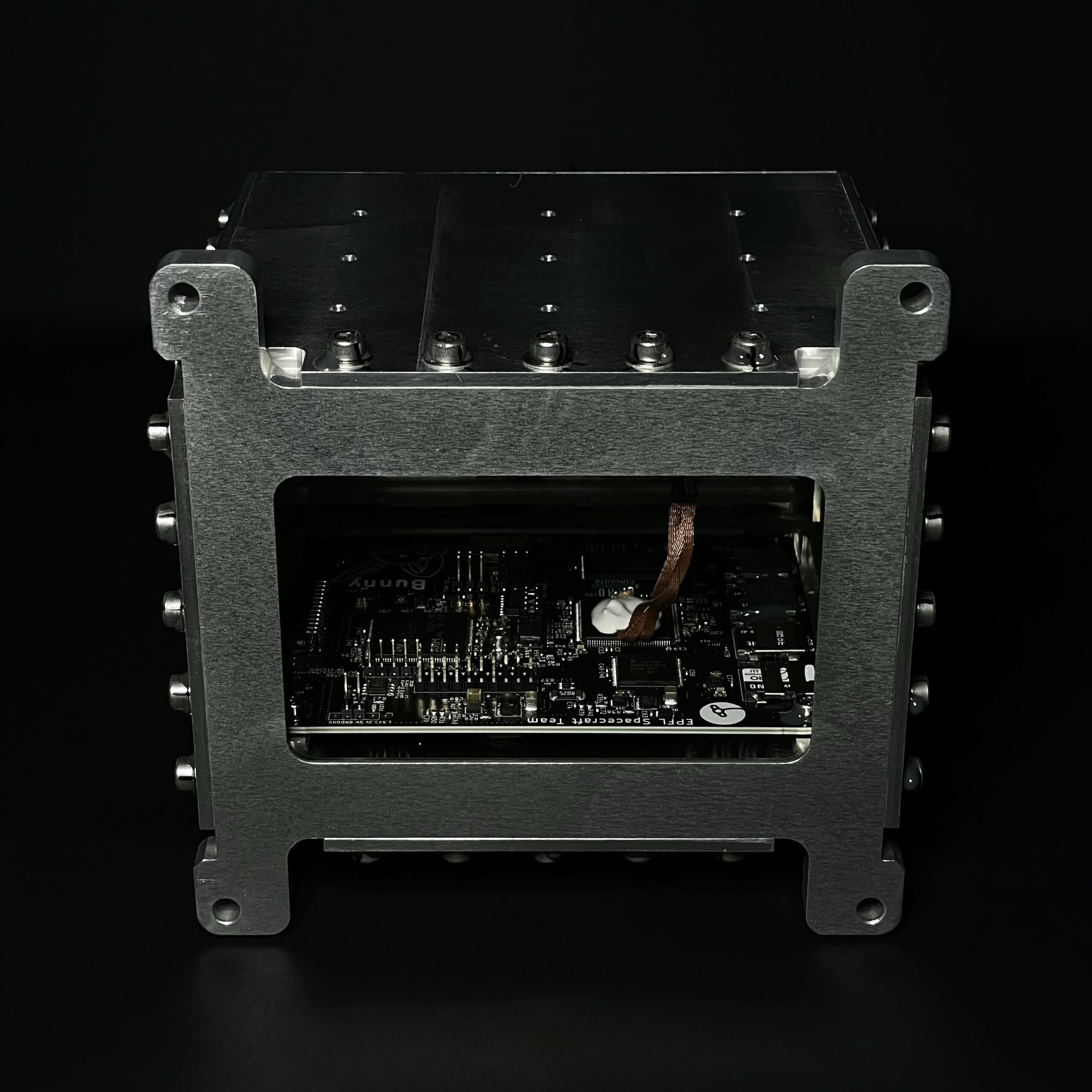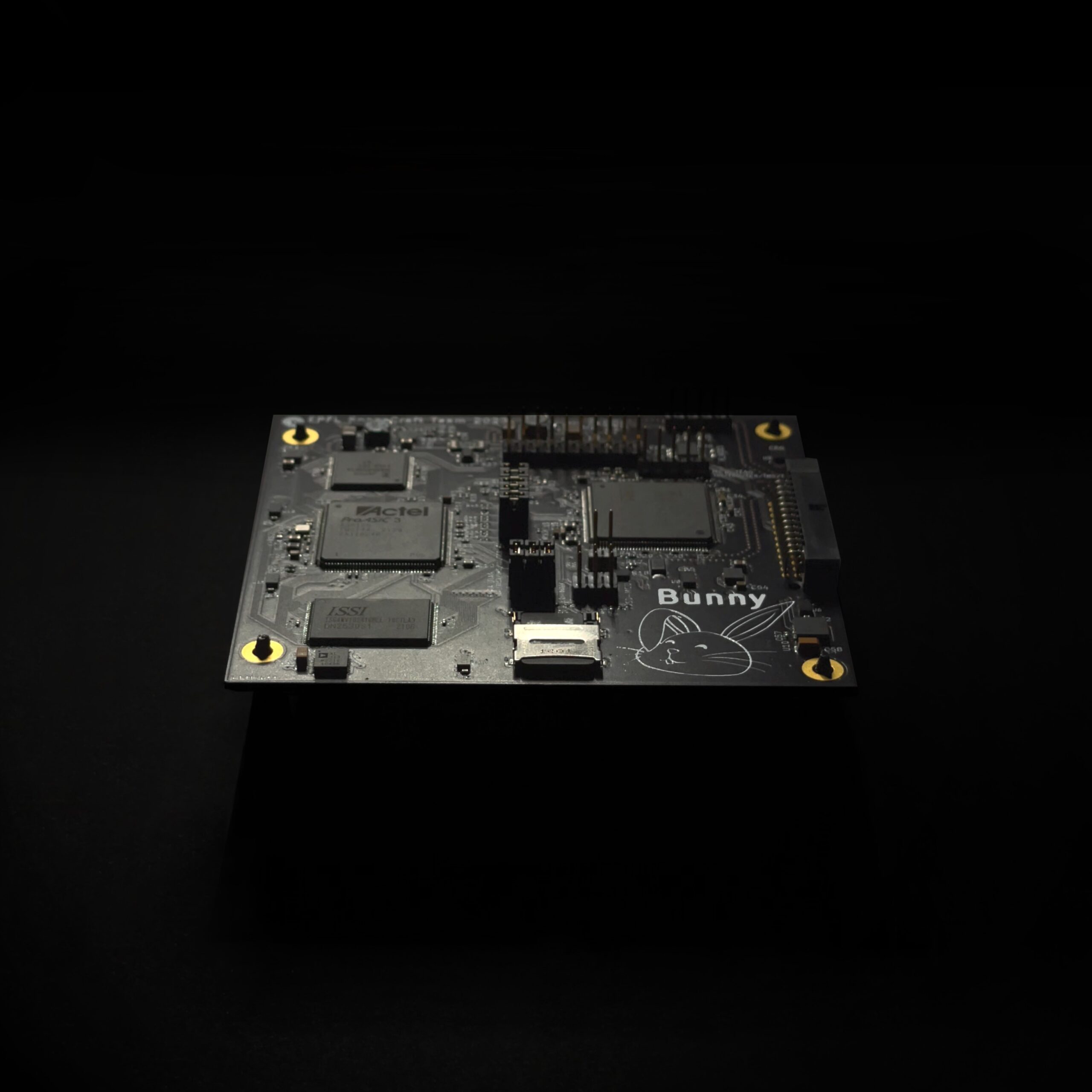Project Bunny
Goint to Space in Four Months

Project Description
In mai 2022, I got a call from a rideshare sales manager from D-Orbit. During this call I learned about a launch opportunity for a single PCB with a simple catch: the payload must be ready for system integration in less than four months.
We accepted the challenge and started working on a new version of our CubeSat OBC (on-board-computer). After four months and two hardware iterations, we had Bunny v2, a pcb that was fully tested to go to space.
In the next sections, I am going to elaborate on the parts I was involved in: project management, pcb design, soc design, and the testing campaign.
As this project is still ongoing (planed launch in January 2023) I will only superficially touch the technical and managerial details of the project. I will add more information once its public.
Project Management
As president of the EPFL Spacecraft Team, I was naturally part of the project management team. We focused on a plan – build – test cycle which we repeated multiple times. This can be examplified by us building two PCB versions. First, we designed a minimal working product before going to the final hardware version including more functionalities and experiments.
PCB Design
The Bunny PCBs are basically a microcontroller, a FPGA, and some peripherals. I was half of the duo that designed the PCBs in KiCad. My main responsibility was everything associated with the FPGA.

Clyde
The Bunny mission wouldn’t be the same if Bunny didn’t have his partner in crime – Clyde. Clyde is the soc (system on chip) running on the FPGA. Due to the chip-shortage, we had to choose a smaller FPGA which lead to a reduced version of the originally planed Clyde. Instead of a RISC-V soft-core, a programmable and APB interface capable state-machine was interfacing with the various peripherals like the communication busses (UART, SPI, I2C), timers, and memories. The main job of Clyde was to provide a proof-of-work to the FPGA that proffed its working in space, even after a complete reprogramming. This is implemented with a callback on the UART bus.
I mostly implemented Clyde myself with the help of Microsemi IP cores. In fact, I didn’t write a single line of VHDL but only configured, connected, and programmed existing blocks.
Testing
As always, testing is of paramount importance for space projects. Bunny went through functional, tvac, and vibration testing. The tests were conducted at EPFL (functional and tvac) and at the university of bern (sine and random vibration). I was personally involved in the vibration testing in Bern.
